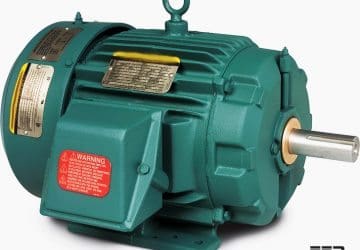Electrical Thumb Rules You MUST Follow (6)
Continued from: Electrical Thumb Rules You MUST Follow (Part 5) Transformer earthing wire / Strip size Motor earthing wire / Strip size Panel earthing wire / Strip size Electrical equipment earthing Earthing wire (As per BS 7671) Area for transformer room:… Read more
Nov 29, 2013 | By Jignesh Parmar
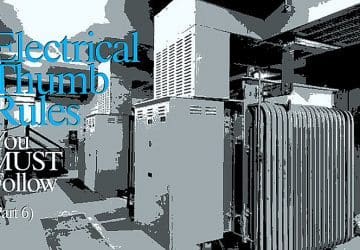
Important in role of capacitors in distribution systems
Should the voltage on a circuit fall below a specified level for some reason, a device called a capacitor can momentarily maintain the voltage at line value. Basically, a capacitor serves the same purpose as a storage tank in a… Read more
Nov 27, 2013 | By Edvard Csanyi
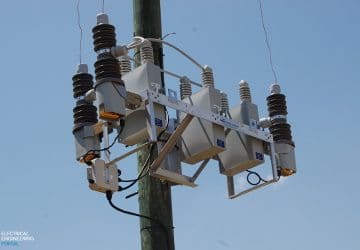
General principles of electricity supply systems
The generation of electricity in most modern power stations is at 25 kV, and this voltage is then transformed to 400 kV for transmission. Virtually all the generators of electricity throughout the world are three-phase synchronous generators. The generator consists… Read more
Nov 25, 2013 | By Edvard Csanyi
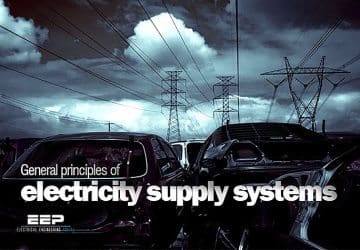
Heat as one of the most common cause of motor failure
Heat is the most common cause of motor failure before reaching rated service life. Every increase of 10 degrees Centigrade of a motor’s windings above its design operating temperature cuts the life of the motor’s windings insulation by 50 percent,… Read more
Nov 22, 2013 | By Edvard Csanyi

Electrical Thumb Rules You MUST Follow (5)
Continued from: Electrical Thumb Rules You MUST Follow (Part 4) Standard Size of Transformer (IEEE/ANSI 57.120) Standard Size of Motor (HP) Approximate RPM of Motor Motor Line Voltage Motor Starting Current Motor Starter Impedance of Transformer (As per IS 2026)… Read more
Nov 20, 2013 | By Jignesh Parmar

Identity Card of Every Asynchronous Motor
A motor is characterized by different electrical and constructional parameters which identify its correct application field. The whole of all these parameters constitutes the rating of the machine and is reported on a nameplate positioned on the motor itself. Hereunder… Read more
Nov 18, 2013 | By Edvard Csanyi
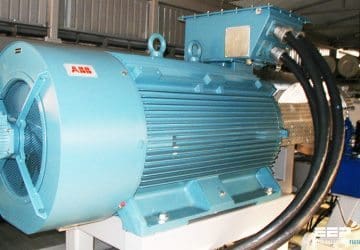
Electrical Thumb Rules You MUST Follow (4)
Continued from: Electrical Thumb Rules You MUST Follow (Part 3) Substation Capacity and Short Circuit Current Capacity (As per GERC) Substation Capacity and Short Circuit Current Capacity (As per Central Electricity Authority) Minimum Ground Clearance and Fault Clearing Time Busbar… Read more
Nov 15, 2013 | By Jignesh Parmar

Guidelines For The Construction And Maintenance Of Transmission Lines
The purpose of this article is to give a general overview of the steps that are necessary in the planning and construction of a typical overhead transmission line, to give newcomers to the trade a general format to follow, and… Read more
Nov 13, 2013 | By Edvard Csanyi

The Need for Load Shedding In Generating, Transmission and Distribution Systems
The need for load shedding generally arises from unforeseen causes, lack of sufficient power supply from deficiencies in generating, transmission and distribution capabilities. These conditions may stem from unusually higher than foreseen demands that may be due to the following:… Read more
Nov 11, 2013 | By Edvard Csanyi
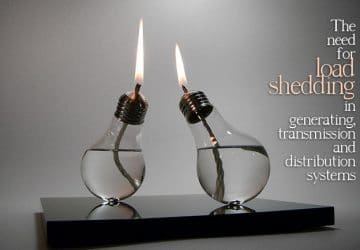
What’s the worst source of fluctuations on a power supply system?
Electric arc furnaces are considered as being one of the worst source of fluctuations on a power supply system. The load cycles of arc furnaces vary widely, depending on size and metallurgical requirements. The first part of the cycle consists… Read more
Nov 08, 2013 | By Edvard Csanyi

Few Words About Stepper Motor (Advantages, Disadvantages and Classification)
A stepper motor is an electromechanical device which converts electrical pulses into discrete mechanical movements. The shaft or spindle of a stepper motor rotates in discrete step increments when electrical command pulses are applied to it in the proper sequence…. Read more
Nov 06, 2013 | By Edvard Csanyi
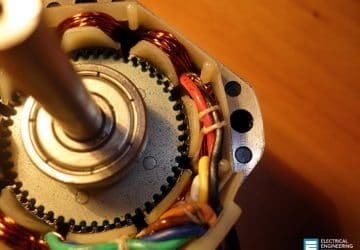
Practical calculations of lightning strikes frequency
We distinguish between the following frequencies of lightning strikes which can be relevant for a building or structure: ND – Frequency of direct lightning strikes to the building or structure;· NM – Frequency of close lightning strikes with electromagnetic effects;… Read more
Nov 04, 2013 | By Edvard Csanyi

4 motor designs identified in NEMA MG1
Performance requirements for various types of induction motors for use on standard sinewave power supplies are identified in NEMA MG1. Some of these types of motors are suitable for use in variable speed applications, dependent on the type of application…. Read more
Nov 01, 2013 | By Edvard Csanyi
